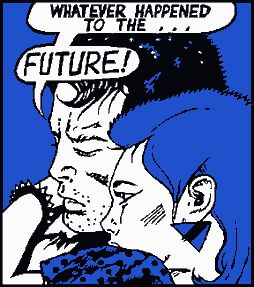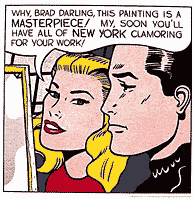Whatever Happened To The Future!

In 1980 I created a silkscreen print that captured the apprehension many were feeling at the time, the general malaise over the state of society and a fear that atomic war with the Soviet Union was imminent. My print, Whatever Happened To The Future!, was a street poster that became a cover illustration for the August 8, 1980 edition of the L.A. Weekly. It appears those feelings of anxiety have returned with the recklessness of the Bush neocons and their plans to nuke that old bugaboo, Iran. My artwork was inspired by two disparate sources from the 1960s, the paintings of American Pop artist Roy Lichtenstein and the art of the French Stituationists. Lichtenstein lifted his images directly from American comic strips, and the Stituationists altered images generated by the status quo by adding their own subversive texts in a process they termed, detournement.

Lichtenstein said in 1963 that “Pop Art is an involvement with what I think to be the most brazen and threatening characteristics of our culture, things we hate, but which are also powerful in their impingement on us.” Early on I appreciated Lichenstein’s willingness to take things most foul and shape them into mirrors reflecting the actual face of a vapid culture – but his works were never true critiques. However the Situationists, who spoke of the “commodity spectacle society,” offered an assessment that brilliantly described the glut and overindulgence of late capitalist society.

What interested me about the artworks of Lichtenstein and the Situationists was that they both suppressed “personal style,” albeit for different reasons – it was the philosophy behind the images that was of paramount importance. The contradiction of course is that Lichtenstein actually became well known for his paintings of gigantic comic strip panels, but still the notion of artistic anonymity held great appeal to me at the time – resulting in my own brief 1980 experiments with the detournement of American comic images. Since then the practice and methodology of detournement has been picked up by everyone from Barbara Kruger to Adbusters, and the times have never been more fertile for such artistic undertakings – or as Situationist Guy Debord wrote in 1956, “The premises for revolution, on the cultural as well as the strictly political level, are not only ripe – they have begun to rot.”


